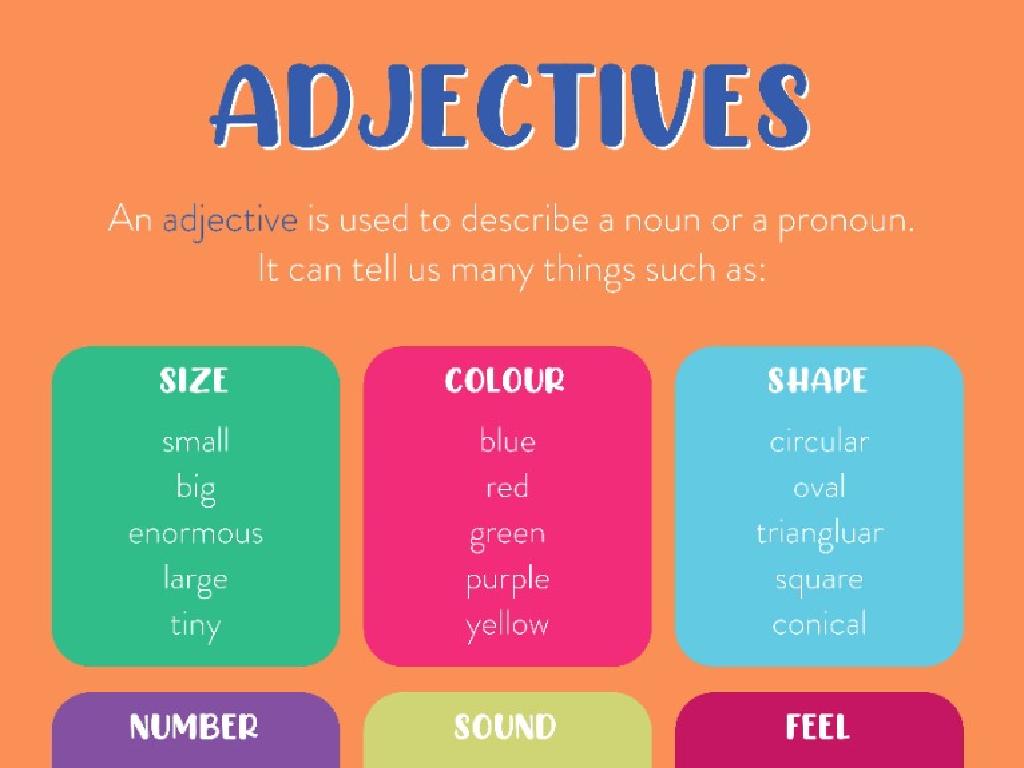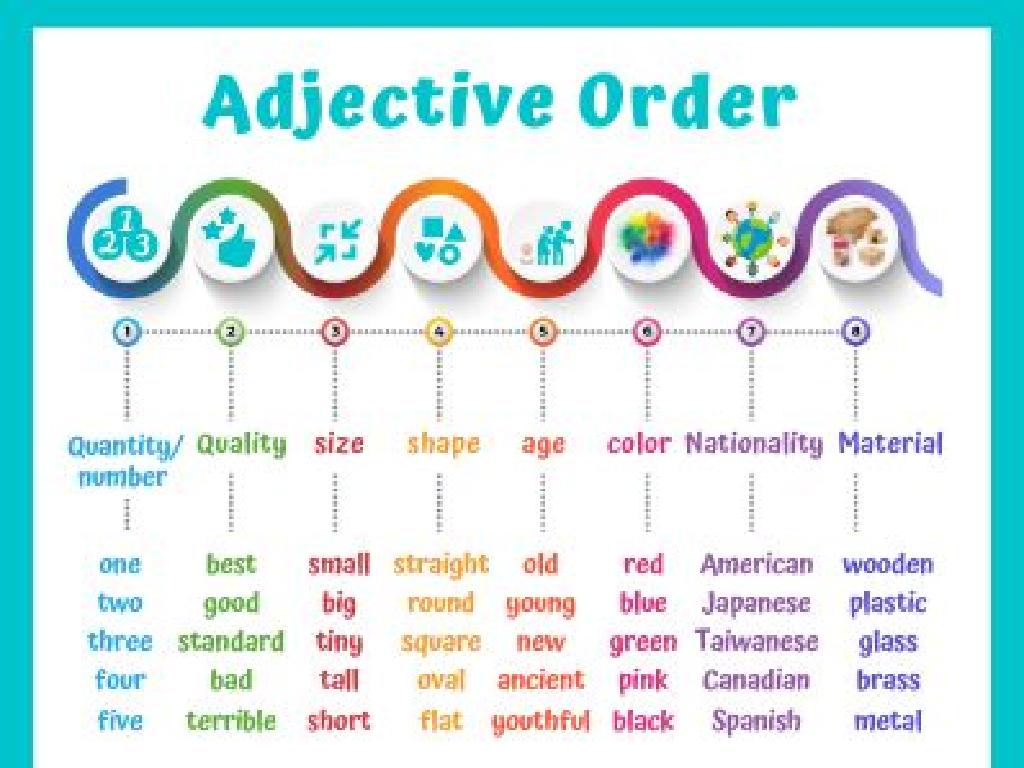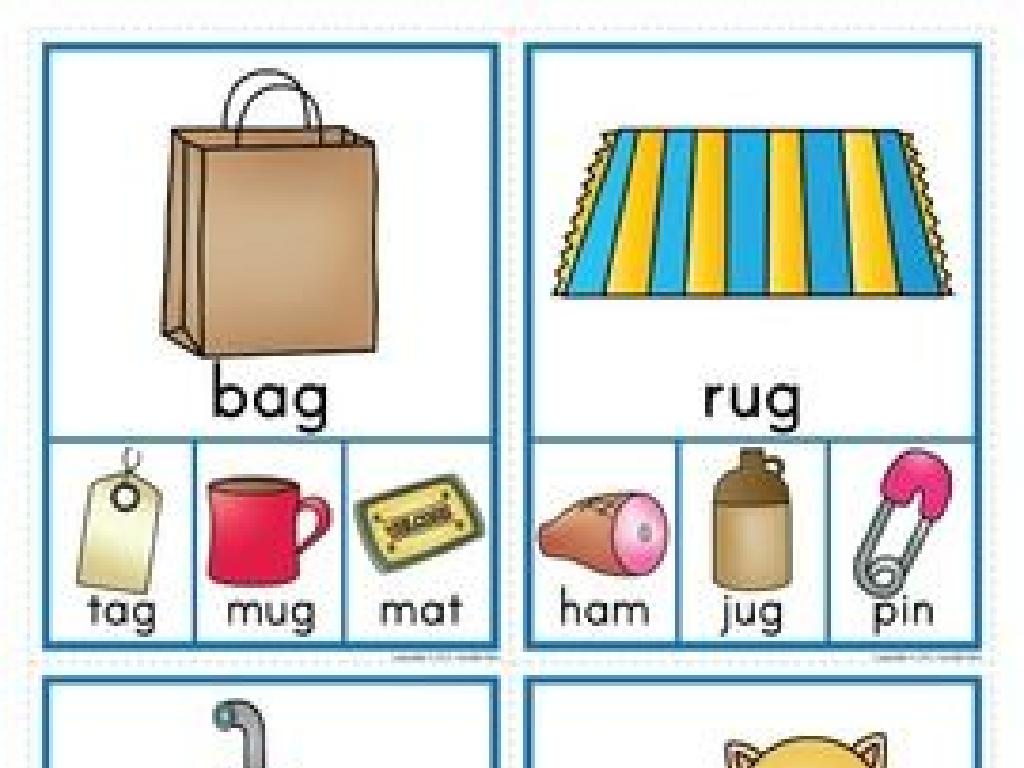Add Multiples Of 100
Subject: Math
Grade: Second grade
Topic: Addition: Three Digits
Summary: Discover how to add three-digit numbers by focusing on multiples of 100, perfect for second-grade math learners. Using real-life examples, visual block stacking, and interactive activities, students will learn to quickly combine numbers like 200 plus 300 or 500 plus 600. This lesson builds place value understanding, essential math skills for counting money and larger numbers, and prepares students for more advanced addition. Fun group activities make math engaging and practical!
Please LOG IN to download the presentation. Access is available to registered users only.
View More Content
Adding Big Numbers: Multiples of 100
– Learn to add big numbers
– What are multiples of 100?
– Numbers like 100, 200, 300… are multiples of 100
– Why add multiples of 100?
– It helps with counting money and understanding distance
– Practice with examples
– Try 100 + 200, or 300 + 400 to start!
|
This slide introduces second-grade students to the concept of adding large numbers, specifically focusing on multiples of 100. Begin by explaining that multiples of 100 are simply numbers that we get when we count by hundreds (100, 200, 300, etc.). Emphasize the practical applications of this skill, such as adding money in hundreds or measuring distances in hundreds of meters. Provide clear examples and encourage students to think of situations where they might need to add multiples of 100. Use visual aids like number lines or place value charts if possible to help students visualize the addition process. The goal is to make them comfortable with the concept and to understand its usefulness in everyday life.
Adding Multiples of 100
– What are multiples of 100?
– Numbers like 100, 200, 300, etc.
– Recognizing multiples of 100
– They always end with two zeros
– Counting by hundreds
– It’s like hopping on a number line: 100, 200, 300…
– Practice adding multiples of 100
– Let’s try 100 + 200. What’s the sum?
|
This slide introduces second-grade students to the concept of multiples of 100. Begin by explaining that multiples of 100 are simply numbers that can be reached by counting by hundreds, starting from 100. Emphasize that these numbers are special because they always end with two zeros, making them easy to identify and work with. Use a number line or counters to visually demonstrate counting by hundreds. For practice, engage the students with simple addition problems involving multiples of 100, ensuring they understand that only the hundreds place changes while the tens and ones remain zeros. Encourage students to think of real-life examples where they might count by hundreds, such as counting money in $100 bills.
Visualizing 100s: Building with Blocks
– Imagine 100 as a big block
– Think of 100 like a large Lego piece
– Stack blocks to make big numbers
– Like building a tower, one block over another
– Each new stack adds another 100
– If you have 3 stacks, that’s 300!
– See how numbers grow with stacks
|
This slide is designed to help second-grade students visualize the concept of adding multiples of 100 using a familiar analogy of stacking blocks. By imagining 100 as a single, sizable block, children can conceptualize the additive process as simply stacking these ‘blocks’ to create larger numbers. Emphasize that each time we add a ‘block’ (or stack another 100), we are increasing our total by 100. This visual approach simplifies the abstract concept of addition for young learners and makes it more tangible. Encourage students to draw their own stacks of blocks to represent different multiples of 100, reinforcing the concept through a hands-on activity.
Adding Multiples of 100
– Adding blocks of hundreds
– Hundreds increase, tens and ones stay
– Example: 300 + 400
– When we add 300 and 400, it’s like adding 3 hundred-blocks to 4 hundred-blocks
– Think: 3 blocks plus 4 blocks
– Just like stacking blocks, we now have 7 hundred-blocks!
|
This slide introduces the concept of adding multiples of 100 in a way that second graders can easily understand. By comparing the addition to stacking blocks, students can visualize the concept without worrying about the tens and ones places. Emphasize that when we add hundreds, only the number in the hundreds place changes. The tens and ones are like the unchanging base of our block tower. Use the example provided to show that 300 (3 blocks) plus 400 (4 blocks) gives us 700 (7 blocks). Encourage students to use physical blocks or drawings to practice this concept with different multiples of 100.
Let’s Practice Adding Multiples of 100!
– Adding 200 and 300
– 200 + 300 equals 500
– Adding 500 and 600
– 500 + 600 equals 1100
– How to add hundreds
– We combine the hundreds place numbers
– Keeping tens and ones
– Tens and ones places don’t change
|
This slide is for a class activity where students will practice adding multiples of 100. Start by demonstrating the addition of 200 and 300, showing that when we add the hundreds place, we get 500. Next, show the addition of 500 and 600, resulting in 1100. Explain that when adding multiples of 100, we only add the numbers in the hundreds place while the tens and ones places remain unchanged. This reinforces place value understanding. For the activity, students can work on similar problems in pairs or groups, using manipulatives like base-ten blocks if available. Possible variations for different students could include adding different multiples of 100 or even challenging them with adding a multiple of 100 to a two-digit number to see if they understand that the tens and ones still remain the same.
The Importance of Adding Multiples of 100
– Speeds up counting
– Helps with money addition
– For example, adding $100 + $300 = $400
– Enhances number comprehension
– Understanding 100s leads to 1000s and beyond
– Prepares for advanced math
|
This slide aims to explain to second-grade students why learning to add multiples of 100 is a valuable skill. It’s not just about being able to do the math; it’s about understanding the concept of grouping and counting in larger units, which makes counting more efficient. When dealing with money, such as dollars, adding hundreds is a practical skill that can be applied in everyday situations like shopping. Grasping the concept of adding hundreds also lays the groundwork for understanding even larger numbers, which is essential as they progress in math. Encourage students to think of situations where they might need to add multiples of 100 and discuss how this skill can be useful in their daily lives.
Class Activity: Building with Hundreds
– Use blocks to represent numbers
– Each block equals 100
– Pair up for adding exercise
– Work together to find sums of blocks
– Add different 100 multiples
– Example: 100 block + 300 block = 400
|
This interactive class activity is designed to help second-grade students understand the concept of adding multiples of 100 in a tangible way. By using physical blocks where each block represents 100, students can visually and physically build numbers and see the results of their addition. Students should work in pairs to encourage collaboration. Provide each pair with a set of blocks and ask them to add different multiples of 100, such as 200 + 500 or 300 + 700. As they work, circulate the room to offer guidance and ensure understanding. Possible activities include: building the highest tower with an exact sum, finding multiple ways to add up to a specific number like 1000 using the blocks, or challenging pairs to find the sum of their blocks the fastest.
Great Work on Adding Multiples of 100!
– Celebrate your adding skills
– Practice makes perfect
– The more you practice, the better you’ll get!
– Continue practicing at home
– Try adding 100 to different things at home
– Exciting numbers ahead!
– Next, we’ll add numbers like 25, 50, and 75!
|
This slide is meant to congratulate the students on their hard work and encourage them to keep practicing their new skills outside of the classroom. Remind them that learning is a continuous process and that they can apply what they’ve learned about adding multiples of 100 to everyday situations at home. Highlight the importance of practice in mastering math concepts. Prepare them for the excitement of learning to add various types of numbers, building anticipation for the next lesson. This will help them understand that math is not just about one type of problem but includes a variety of challenges.





